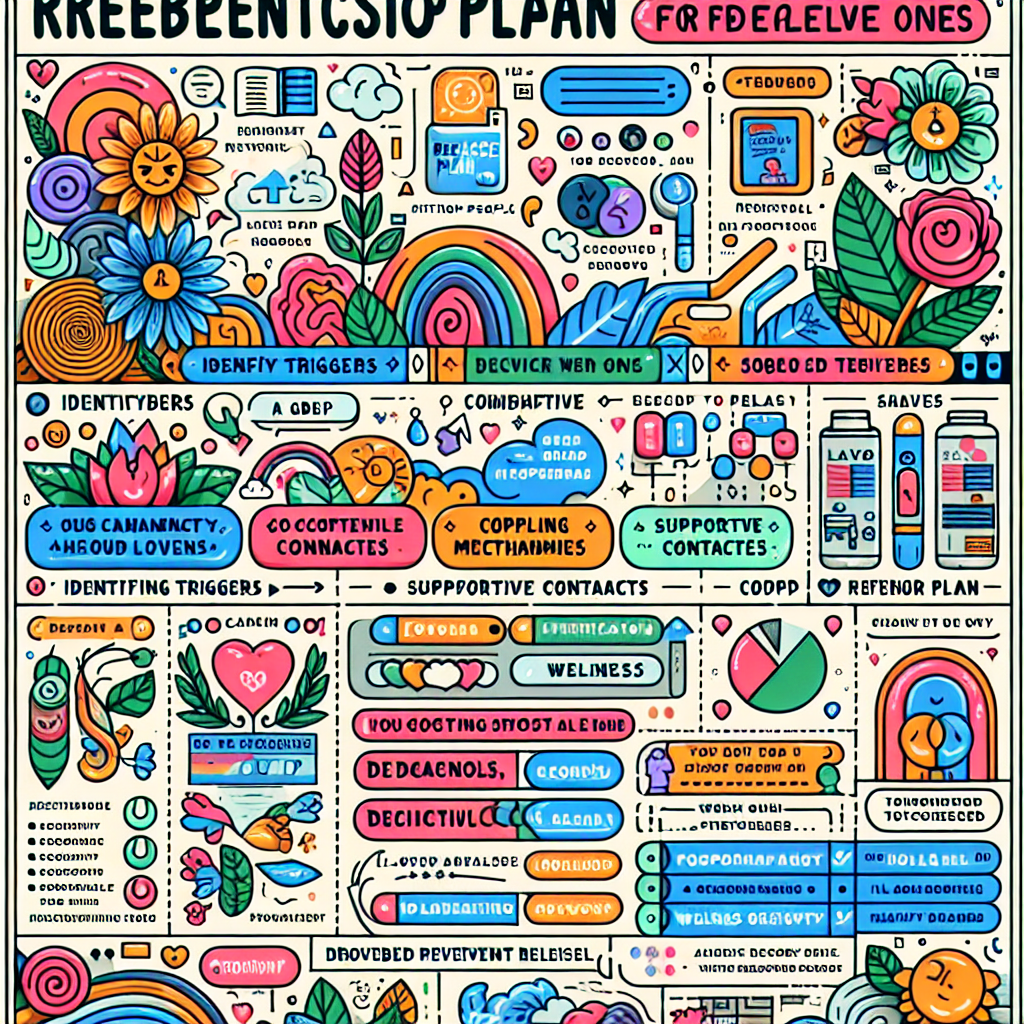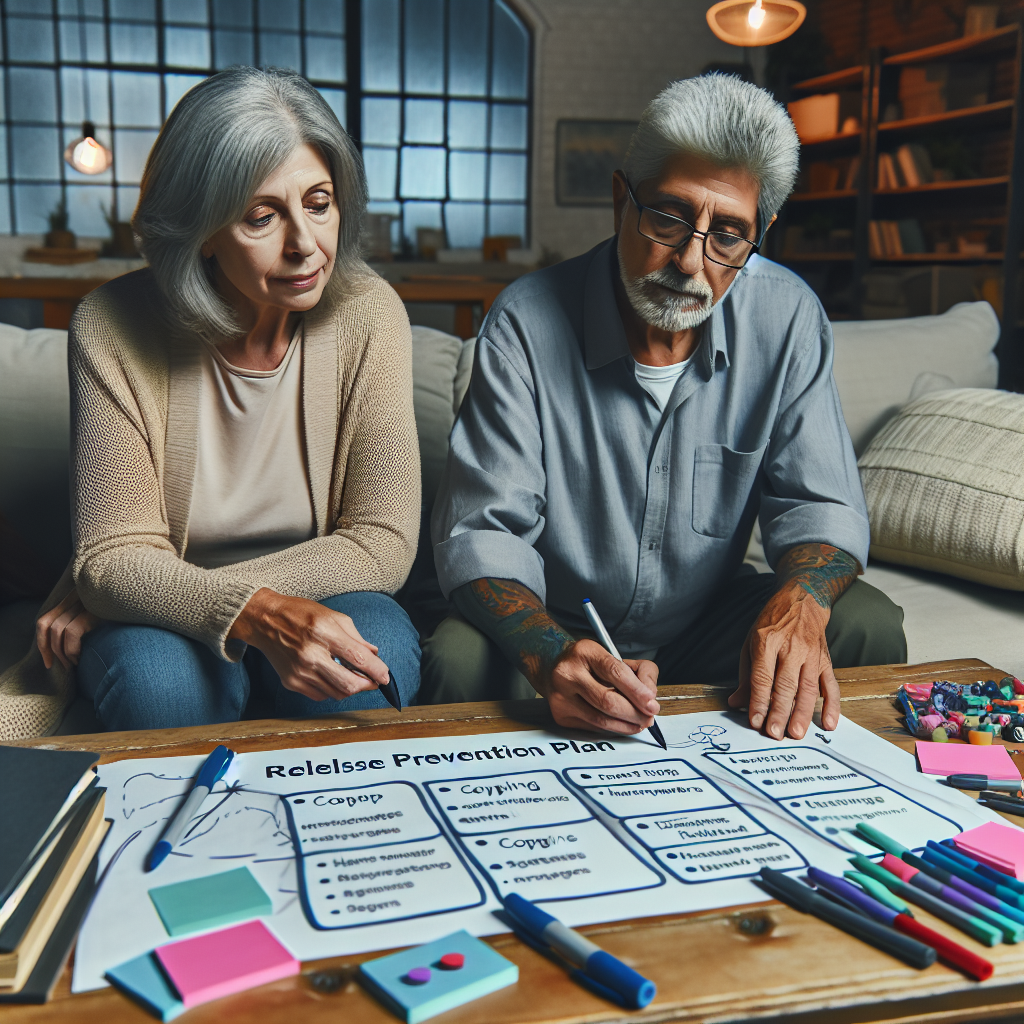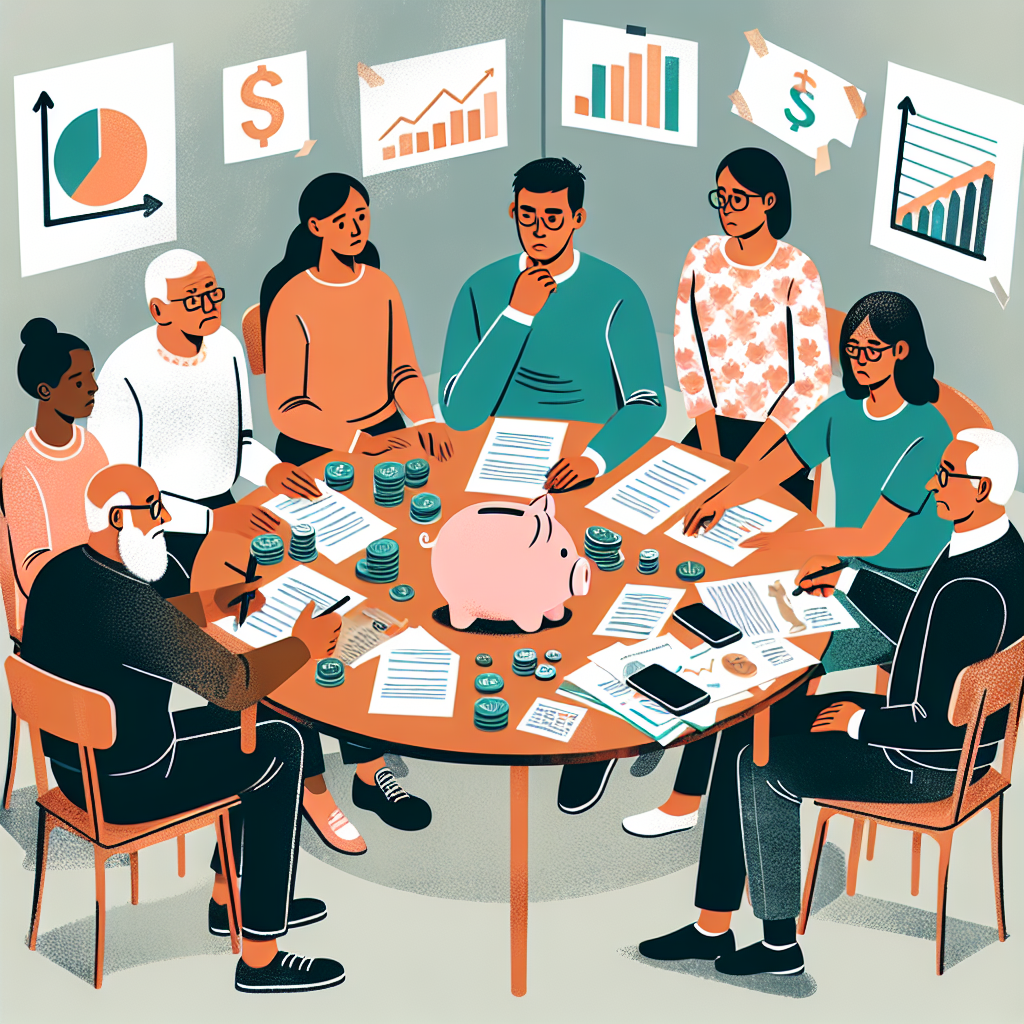-
Table of Contents

“Empower Recovery: Crafting a Personalized Relapse Prevention Plan for Your Loved One”
Introduction
Helping a loved one develop a relapse prevention plan involves understanding the triggers and warning signs of relapse, creating a supportive environment, and encouraging healthy coping strategies. Start by educating yourself and your loved one about the nature of addiction and the common factors that can lead to relapse. Work together to identify specific triggers, such as stress, certain social situations, or emotional states, and develop strategies to avoid or manage these triggers. Encourage open communication and provide emotional support, while also helping them to establish a routine that includes healthy habits like regular exercise, balanced nutrition, and sufficient sleep. Additionally, consider involving professionals such as therapists or support groups to provide further guidance and accountability. By taking these steps, you can play a crucial role in helping your loved one maintain their recovery and build a resilient relapse prevention plan.
Steps To Support Your Loved One In Creating An Effective Relapse Prevention Plan
Supporting a loved one in developing a relapse prevention plan is a crucial step in their journey towards sustained recovery. It requires a blend of empathy, understanding, and practical strategies to ensure they feel supported and empowered. The first step in this process is to educate yourself about addiction and relapse. Understanding the triggers, warning signs, and the psychological aspects of addiction can provide a solid foundation for offering meaningful support. This knowledge will enable you to have informed conversations and offer relevant advice, making your loved one feel understood and less isolated.
Next, open a dialogue with your loved one about their goals and fears regarding relapse. This conversation should be approached with sensitivity and without judgment. Encourage them to express their thoughts and feelings openly. By doing so, you create a safe space where they feel comfortable discussing their vulnerabilities. This openness is essential for identifying potential triggers and developing strategies to manage them effectively.
Once you have a clear understanding of their concerns, work together to identify specific triggers that could lead to a relapse. These triggers can be emotional, environmental, or social. For instance, stress, certain places, or even specific people can act as catalysts for relapse. By pinpointing these triggers, you can help your loved one develop strategies to avoid or cope with them. This might involve avoiding certain situations, practicing stress-reduction techniques, or seeking support from trusted individuals.
In addition to identifying triggers, it is important to develop a comprehensive action plan for managing cravings and high-risk situations. This plan should include practical steps that your loved one can take when they feel the urge to relapse. Techniques such as mindfulness, deep breathing exercises, or engaging in a distracting activity can be effective in managing cravings. Encourage your loved one to practice these techniques regularly so that they become second nature when needed.
Another critical component of a relapse prevention plan is building a strong support network. Encourage your loved one to connect with others who are also in recovery, whether through support groups, therapy, or online communities. Having a network of individuals who understand their struggles can provide invaluable emotional support and practical advice. Additionally, involving family and friends in the recovery process can create a sense of accountability and encouragement.
It is also essential to set realistic and achievable goals as part of the relapse prevention plan. These goals should be specific, measurable, and time-bound. For example, committing to attending a certain number of support group meetings each week or setting aside time for self-care activities can provide structure and motivation. Celebrate each milestone achieved, no matter how small, to reinforce positive behavior and build confidence.
Lastly, encourage your loved one to seek professional help if needed. Therapists, counselors, and addiction specialists can offer expert guidance and support tailored to their specific needs. Professional help can provide additional tools and resources that may not be available through informal support networks.
In conclusion, helping a loved one develop a relapse prevention plan involves a combination of education, open communication, practical strategies, and emotional support. By working together to identify triggers, develop coping mechanisms, build a support network, set achievable goals, and seek professional help, you can play a pivotal role in their journey towards sustained recovery. Your unwavering support and encouragement can make a significant difference in their ability to maintain sobriety and lead a fulfilling life.
Key Elements Of A Relapse Prevention Plan And How To Assist Your Loved One
Supporting a loved one in developing a relapse prevention plan is a crucial step in their journey towards sustained recovery. This process involves understanding the key elements of such a plan and knowing how to assist effectively. By being informed and compassionate, you can play a significant role in helping your loved one maintain their sobriety and build a healthier future.
A relapse prevention plan typically includes several essential components. Firstly, it is important to identify triggers that may lead to a relapse. These triggers can be emotional, environmental, or social. Emotional triggers might include feelings of stress, anxiety, or depression, while environmental triggers could be specific places or situations associated with past substance use. Social triggers often involve interactions with certain people or groups. By helping your loved one recognize these triggers, you can assist them in developing strategies to avoid or cope with them.
Another key element of a relapse prevention plan is the development of healthy coping mechanisms. These are alternative behaviors or activities that can replace the urge to use substances. Encouraging your loved one to engage in physical exercise, pursue hobbies, or practice mindfulness and relaxation techniques can be highly beneficial. Additionally, fostering open communication and providing a non-judgmental space for them to express their feelings can help them manage stress and emotional challenges more effectively.
Creating a strong support network is also vital. This network can include family members, friends, support groups, and professional counselors. By encouraging your loved one to build and maintain these connections, you can help them feel less isolated and more supported in their recovery journey. Attending support group meetings together or participating in family therapy sessions can strengthen these bonds and provide additional layers of accountability and encouragement.
Setting realistic and achievable goals is another important aspect of a relapse prevention plan. These goals should be specific, measurable, and time-bound, allowing your loved one to track their progress and celebrate their successes. By working together to set these goals, you can help them stay motivated and focused on their recovery. It is also important to be patient and understanding, as setbacks may occur. Reminding your loved one that recovery is a continuous process and that it is okay to seek help when needed can make a significant difference.
In addition to these elements, it is essential to have a plan in place for dealing with potential relapses. This plan should outline the steps to take if a relapse occurs, such as contacting a counselor, attending a support group meeting, or reaching out to a trusted friend or family member. By having a clear and actionable plan, your loved one can feel more prepared and less overwhelmed if they face a setback.
Your role in assisting your loved one with their relapse prevention plan is to provide unwavering support, encouragement, and understanding. Educating yourself about addiction and recovery can help you offer informed guidance and empathy. Remember that your loved one’s journey is unique, and their needs may change over time. By remaining flexible and responsive, you can help them navigate the challenges of recovery and build a resilient foundation for a healthier future.
In conclusion, developing a relapse prevention plan involves identifying triggers, creating healthy coping mechanisms, building a support network, setting achievable goals, and preparing for potential relapses. By assisting your loved one with these key elements and offering consistent support, you can play a pivotal role in their recovery journey. Your compassion and dedication can inspire them to stay committed to their sobriety and embrace a brighter, substance-free future.
Q&A
1. **Question:** What are the key components of a relapse prevention plan for a loved one?
**Answer:** The key components of a relapse prevention plan include identifying triggers, developing coping strategies, creating a support network, setting realistic goals, and establishing a routine for ongoing therapy or support group attendance.
2. **Question:** How can I support my loved one in sticking to their relapse prevention plan?
**Answer:** You can support your loved one by regularly checking in on their progress, encouraging them to attend therapy or support groups, helping them avoid triggers, and being a part of their support network by offering emotional and practical assistance.
Conclusion
To help your loved one develop a relapse prevention plan, encourage them to identify triggers, create a list of coping strategies, establish a support network, set realistic goals, and regularly review and adjust the plan as needed. Your support and understanding can be crucial in their journey towards sustained recovery.



